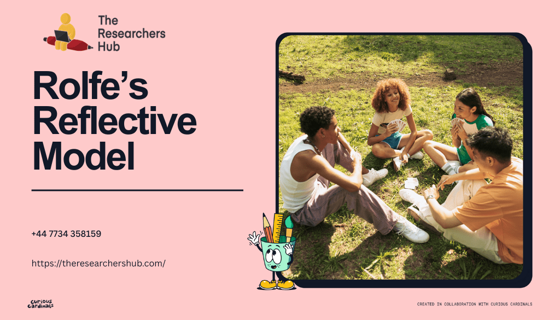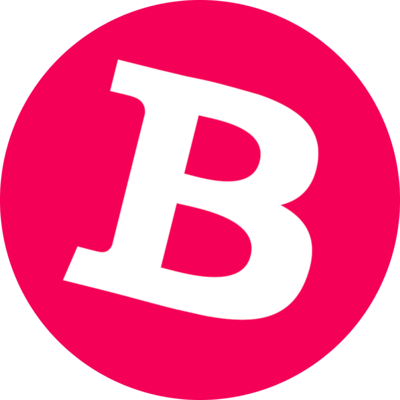Writing a Critical Reflection: A Practical Example Using Rolfe’s Reflective Model

Reflective practice is an essential component of professional and personal growth—it allows us to take real-life experiences, analyse them thoughtfully, and apply insights to future action. One widely used framework for this purpose is the model developed by Gary Rolfe and colleagues (2001), commonly referred to as Rolfe’s Reflective Model. This model asks three core questions: What? So what? Now what?—which guide the writer through description, analysis, and planning.
In this article I will first outline the framework of the model, then apply it to a practical example drawn from a professional-educational experience, and finally reflect on how the process enhanced my learning and will shape my future practice.
Understanding the Framework of Rolfe’s Reflective Model
The Three Key Questions
At its heart, Rolfe’s Reflective Model is built on the simple sequence:
What? – Describing the event/experience in objective terms.
So what? – Interpreting the meaning of the experience: why it matters, what I learned, what the implications are.
Now what? – Formulating the action plan: what will I do differently in the future, how will I apply the learning, what changes will I make?
Purpose and Strengths
The model’s strength lies in its clarity and simplicity—it provides a straightforward route into reflection. According to some sources, it was developed for healthcare professionals (especially nursing) but has since seen broader application. By structuring reflection around narrative (What?), meaning (So what?), and action (Now what?), it encourages not just description but also critical thinking and development.
Limitations to Keep in Mind
While the simplicity is a benefit, there is also a risk: if the reflection remains at a purely descriptive level (i.e., just answering “What happened?”) then the insight and transformation may be limited. Some users warn that the “So what?” and “Now what?” steps must be thoroughly addressed to avoid superficial reflection.
Also, the model does not explicitly prompt exploration of emotions, power relations, or deeper theoretical frameworks unless the writer brings these in—so the onus is on the writer to deepen the reflection.
Practical Example: Reflecting on a Learning Experience
To illustrate how one might use the framework, I will walk through a reflection on a concrete experience: participating in a team-based project during a postgraduate course, where I led the team’s research and submission process.
What? (Description)
In the fourth semester of my postgraduate programme in education leadership, our cohort was divided into teams of five to complete a research-informed project on a chosen topic. My team selected “Integrating digital formative assessment tools in secondary classrooms”. I volunteered to lead the team, coordinated weekly meetings, set timelines, delegated sections of the literature review, data-collection plan, and draft submission.
During week 8, we encountered a challenge: one team member did not complete their portion of the literature review by the deadline. As a result, we had to re-allocate tasks, compress the timeline, and I had to write their section, plus revise the entire draft within a shorter window. I felt frustrated, anxious about the submission quality, and worried about fairness toward the member who had delivered on time. At the final submission, although we got a good grade overall, the draft lacked the depth I initially hoped for, and I sensed the team morale had been affected.
In summary: Project start → leadership role accepted → team member delay → timeline disruption → personal stress + team impact → submission outcome less than ideal.
So What? (Analysis and Meaning)
Why did this matter? What did it reveal about my leadership, team dynamics, and professional practice?
Firstly, the incident highlighted the importance of clear communication and role-allocation from the outset. Although I believed I had delegated tasks and set deadlines, I realise now that I did not verify individual understanding of responsibilities or set interim check-points for the literature review. In other words, I assumed compliance rather than secured it. Literature on team-based work emphasises that clarity of roles and regular monitoring are critical for success in collaborative tasks (Johnson & Johnson, 1993, as cited in Rolfe et al., 2001).
Secondly, my emotional response—frustration and anxiety—reveals something about my leadership style. I tended toward viewing non-delivery as a personal failure rather than exploring underlying reasons (perhaps the team member was overloaded, unclear about expectations, or lacked confidence). Reflective writing guides suggest that high-quality reflection explores feelings, assumptions, and context, not just actions.
Thirdly, the disruption of the timeline and quality reminds me that contingency planning and buffer time are vital in project work. In the busy schedule of postgraduate students, deadlines often collide; a resilient timeline should accommodate unforeseen delays.
Finally, this experience connects to my broader professional identity: as a future educational leader, I must foster supportive team environments, emphasise accountability, and build processes that anticipate risk. The shift from a “task-doer” to a “team-facilitator” mindset is necessary.
Now What? (Action Planning)
Given the insights above, what will I do differently in future projects? How will I turn this learning into action?
Set clear roles and confirm understanding: At the first team meeting, I will circulate a role-matrix showing each member’s tasks, deadlines, and expected deliverables. I will ask each member verbally (or via chat) to confirm their understanding and commitment.
Establish interim checkpoints: I will build into the project timeline at least two checkpoints (e.g., 50% literature review submission, first draft completion) and send reminders. This allows early detection of delays, enabling corrective action before things crunch.
Buffer time in schedule: I will factor in a contingency period (e.g., one week extra) before the final submission deadline to allow for unforeseen issues. This helps reduce stress and ensure quality.
Support team members proactively: I will invite a brief mid-project check-in (via call or chat) where each member can flag any emerging issues—lack of clarity, time pressure, or access to resources. This will help me intervene early rather than when problems become urgent.
Reflect post-project: After completion, I will schedule a 30-minute reflective debrief with the team: what went well, what we would change, what we learned. Documenting this reflection will feed into the next project’s planning.
Personal growth objective: In my leadership role, I aim to move from micro-managing tasks toward building team autonomy. My personal learning goal is: “In the next project, I will delegate more and monitor via checkpoints, rather than redo tasks myself.” I will evaluate whether I achieved this by the feedback from team members and the quality of the submission.
By implementing these actions, I anticipate that future team-based projects will run more smoothly, maintain higher morale, and produce stronger outputs.
Reflection on the Reflection Process
Using Rolfe’s Reflective Model allowed me to structure this reflection in a clear and disciplined way. The “What?” stage anchored me in factual description rather than vague memories. The “So what?” stage forced me to step back and ask why the scenario mattered, linking to my leadership practice and theory. And the “Now what?” stage moved me from thinking into doing—it enabled me to develop concrete steps I will take next time.
In analysing this process, I realised that reflection is not just an add-on but a critical tool for professional development—especially in roles that involve leadership, teaching, mentoring, or teamwork. Without structured reflection, one can easily repeat mistakes or accept outcomes without learning from them.
Moreover, I appreciate that while the model is simple, the depth of reflection depends on how honestly and thoroughly one engages with the “So what?” and “Now what?” stages. For example, in the future I might deepen the analysis by integrating more theory (e.g., team dynamics, change management) and exploring power relations or assumptions in team settings. The model provides space for that, but doesn’t prescribe the entire content.
Conclusion
In summary, critical reflection using the framework of Rolfe’s Reflective Model is a powerful way to learn from experience in a meaningful way. The three questions—What? So what? Now what?—serve as guideposts for description, meaning-making, and action planning. In the application to my team-based project experience, I was able to identify issues in communication, leadership style, and timeline planning—and convert them into a concrete action plan for future improvement.
As professionals, especially in dynamic, collaborative environments, making time for structured reflection is a vital investment in competence and confidence. I encourage you to use this model or one suited to your context, to revisit your key experiences, extract the learning they hold, and plan your next steps. The journey of growth lies in reflection, action, and iteration.
Follow jhon smith to stay updated on their latest posts!
0 comments
Be the first to comment!
This post is waiting for your feedback.
Share your thoughts and join the conversation.
